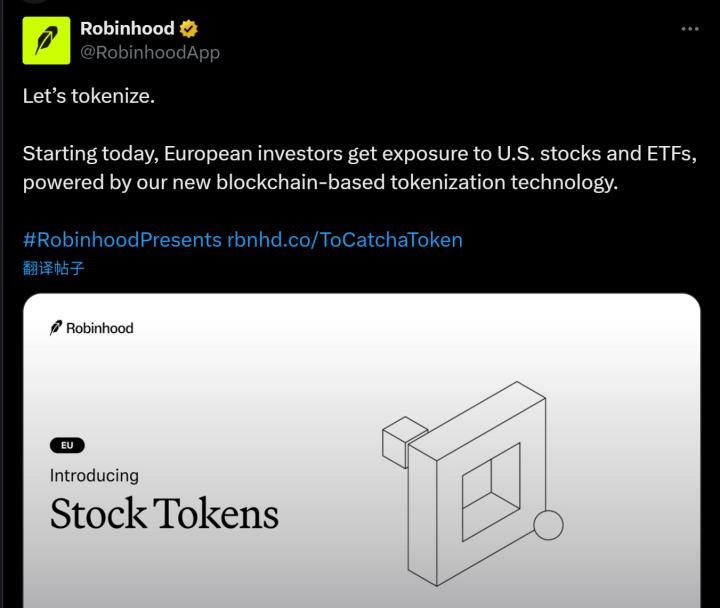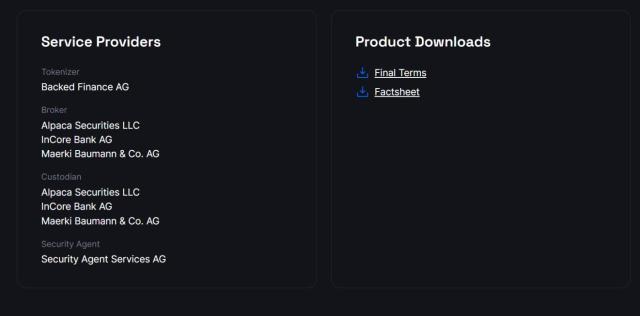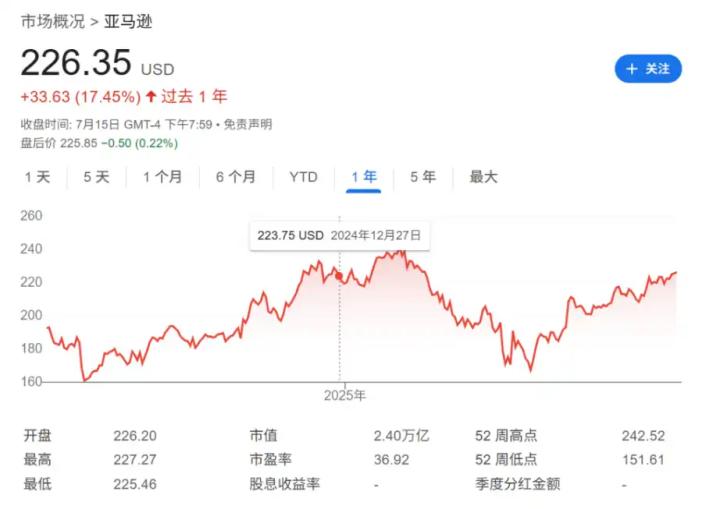Author: Franklin Bi, Partner at Pantera Capital; Source: Pantera Capital July Blockchain Letter Translated by: AIMan@Jinse Finance
In 2025, tokenization will move from concept to inevitability.
Nearly ten years have passed since I participated in drafting the initial design of JPMorgan's asset tokenization. At that time, the idea of settling securities on public infrastructure seemed radical. But one thing was clear: once these "tracks" become programmable, the structure of capital markets would ultimately change.
Today, this hypothesis is becoming a reality at an unprecedented speed.
Currently, over $24 billion of real-world assets have entered public blockchains, growing more than threefold since early 2023. From BlackRock and Franklin Templeton to Siemens and JPMorgan, nearly 200 issuers have invested actual capital on-chain. Financial technology companies are no longer satisfied with being modern interfaces for traditional tracks, but are beginning to build new tracks themselves. Enterprises are also starting to issue on public blockchain infrastructure for the first time.
A few weeks ago, Robinhood announced the launch of Stock Tokens, creating a new landscape: these tokenized stocks, exchange-traded funds (ETFs), and private company shares will be issued on Ethereum's Layer 2 network Arbitrum. CEO Vlad Tenev stated that the company's goal is to build Robinhood Chain - a network driven by Arbitrum, optimized for 24/7 global trading of tokenized assets.
A deeper transformation is unfolding. The infrastructure of capital markets is migrating on-chain. Meanwhile, the strategies of financial technology companies, enterprises, and investors are being rewritten in real-time. We are witnessing a massive migration: assets, issuers, and investors are turning to a new generation of infrastructure for the circulation, clearing, and valuation of capital assets.
An "gravity well" is forming around the early liquidity of tokenized assets. We believe it will shift the center of price discovery, capital formation, and liquidity from Wall Street's outdated pipeline system to modern blockchain tracks.
The question now is: What happens next?
Financial Physics
If Isaac Newton worked on Wall Street, I believe his first law of financial physics would be:
"Assets will move in the direction of least resistance (unless regulatory intervention occurs)."
In other words, assets will ultimately flow to a place that is:
1. Most freely liquid (globally accessible, 24/7, software-level speed)
2. Lowest transaction costs (fewest intermediaries, software-level costs)
3. Most comprehensive valuation (global price discovery, maximum utility and composability)
Blockchain has finally made this possible. I have witnessed this migration process within global banking at JPMorgan and in Pantera's venture capital ecosystem. What seemed impossible to my Wall Street colleagues in 2015 is now not only operational but accelerating.
Like the Eurodollar in the 1960s, American Depositary Receipts (ADRs) in the 90s, and Exchange-Traded Funds (ETFs) in the early 2000s, the liquidity of tokenized assets will first gather at the edges and then spread to the center. Tokenized government bonds, private credit, and now stocks are early signals:

Today, Figure has processed over $41 billion in real-world asset (RWA) transactions, currently holding $13 billion in assets on-chain, including the first publicly rated Home Equity Line of Credit (HELOC) Asset-Backed Securities (ABS) natively issued on blockchain tracks. Ondo has issued over $1 billion in tokenized government bonds and is now expanding to tokenized stocks through Ondo Global Markets, planning to offer over 1,000 tokenized stocks from NYSE and NASDAQ.
Tokenization is the first time capital markets have truly globalized. We believe the most premium issuers will follow liquidity, seamlessly accessing global capital pools - which can only be achieved through on-chain settlement. The most forward-thinking investors will demand portability, transparency, and utility that only on-chain primitives can provide.
BlackRock's BUIDL fund broke through $375 million in AUM within six weeks of launch and now exceeds $2.6 billion, natively paying dividends on Ethereum in USDC. JPMorgan's blockchain platform processes intraday repurchase transactions on an Ethereum private fork, settling collateral within minutes compared to days in traditional methods. In 2023, Siemens directly issued a €60 million digital bond on the public Ethereum without bank involvement. Similarly, Société Générale issued a digital green bond on Ethereum in 2023, with regulated entities like AXA and Generali participating. These successful pilots are early signals of an impending wave.
Institutions are now gradually realizing we no longer need:
● Investment banks to facilitate capital acquisition
● Correspondent banks to piece together global distribution networks
● T+2 settlement cycles that delay liquidity and amplify risks
Public chains provide global coverage, instant settlement, and programmable logic. For companies facing rising capital costs and dispersed investor bases, the ability to issue bonds (ultimately stocks) with one click and immediately access global liquidity is an irresistible proposition.
Fintech companies are building chains to acquire distribution and monetization capabilities. Enterprises are issuing on-chain to reduce capital costs and expand access.
Both have reached the same conclusion: public chains are the most reliable infrastructure for operating the world's first truly global, 24/7, universally accessible capital market.
Access Rights, But Not Ownership Rights
However, most "tokenization" today remains incomplete. We have built highways, but the gates to the city center—courts, shareholder registries, governance mechanisms—remain locked.
Today, you can trade tokenized stocks and government bonds on-chain, but do not mistake this for full ownership. Your rights—voting, inspection, or enforcement—are still trapped in off-chain structures: SPVs, custodians, transfer agents. We have given investors access rights but not ownership rights.
As liquidity grows and investors experience the benefits of their tokenized portfolios, there will be increasing pressure to compel issuers to grant token holders full shareholder rights. Some investors will not wait and will tokenize their portfolios first, then ask for forgiveness.
This tension between issuer rights and investor rights will likely become one of the defining battlegrounds in tokenization over the next decade. When assets are on-chain but the registry is not, who controls shareholder privileges? What happens when token holders want more than transferability and price discovery—when they want the power that true ownership brings?
As SEC Commissioner Hester Peirce recently said, the prospect of tokenized securities is "fascinating, but not magic". Merely wrapping assets in digital form does not realize this vision. It requires issuers to transform their thinking, moving from experimental sandboxes to treating native on-chain issuance as the default pathway to accessing global capital pools.
The Tipping Point of Tokenization
The rise of tokenized assets today parallels the early development of exchange-traded funds (ETFs).
In 1993, after the first US stock ETF (SPY) launched, AUM exceeded $1 billion within a year. But the true inflection point was not its size, but when ETF trading volumes began consistently catching up to and eventually surpassing mutual fund capital flows. That was when market structure changed, and investor behavior shifted.
We believe tokenization will experience a similar moment in broad market structural transformation and issuer and investor behavior. I believe the tipping point will arrive when any of the following occur:
● Daily on-chain stock trading volume exceeds $1 billion, comparable to lower-tier ADRs or long-tail ETFs
● Tokenized stock AUM breaks $100 billion, giving systematic allocators (sovereign wealth funds, pension funds, endowments) confidence to adopt tokenized assets in their portfolios
● A top-listed company (S&P 500 or NASDAQ 100 constituent) has greater on-chain liquidity than its domestic exchange or corresponding ADR
● A global IPO completely bypasses New York, issuing directly on-chain or in a financial center with more comprehensive regulatory and policy frameworks for on-chain issuance
Currently, we are still in the early stages: tokenized stock monthly average trading volume is around $300 million. But the growth rate is crucial—it has grown 350% in the past month, with many important new initiatives (like Robinhood's stock tokens and Ondo Global Markets) still in early stages.
If this momentum is maintained, the $1 billion daily trading volume threshold could be achieved in 2-4 years, depending on several potential catalysts:
● Regulatory clarity on tokenized asset packaging and native on-chain stock issuance
● Specific financial application chains reaching scale in performance and liquidity, such as Robinhood Chain, Ondo Chain, Provenance Blockchain (with certainly more to come)
● Elimination of user experience (UX) barriers, allowing retail investors to access on-chain assets without wallets or gas fees
● A portable compliance layer that abstracts KYC/AML checks and natively binds them to tokens, safely and compliantly releasing cross-border liquidity
When all this happens, it will seem obvious in hindsight, like the "ETF moment" of tokenization. Today's early adopters are focused on applying a better set of rails, but the biggest story is the structural transformation of capital markets. Once the migration is complete, blockchain will be recognized as the default destination for capital formation, price discovery, and value transfer—the first and last stop for issuers and investors.
After participating in some of the earliest tokenization blueprint designs, I can confidently say: the rails are ready, liquidity is flowing in, and the momentum is real.
The gravity well has formed, and now we just need to watch.








